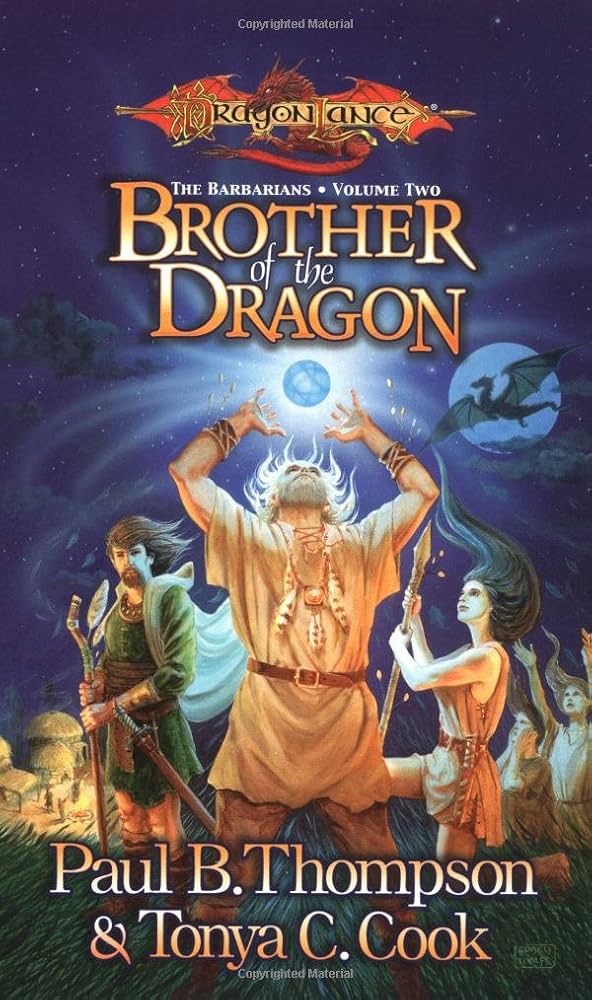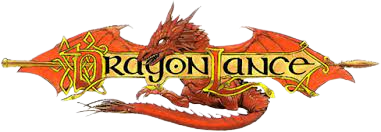Brother of the Dragon

Table of Contents
ToggleOverview
Brother of the Dragon continues the story begun in Chosen of the Gods, following Beldinas Pilofiro, the man who becomes the Kingpriest of Istar, as he moves from divinely inspired leader to instrument of dogmatic tyranny. This installment focuses on the corruption of ideals, the abuse of faith, and the final steps toward the Cataclysm, all seen through deeply personal lenses.
The book also follows the powerful and conflicted Cathan MarSevrin, a noble warrior and loyal servant of the Kingpriest, whose growing doubts put him on a collision course with destiny.
Main Characters
Cathan MarSevrin
- A loyal general and devout follower of the Kingpriest, though not a blind believer.
- Serves as the emotional and moral center of the trilogy.
- As Beldinas’s policies grow more extreme, Cathan is torn between loyalty and conscience.
Beldinas Pilofiro (The Kingpriest)
- Once a humble man of faith, Beldinas now believes he is the Chosen of Paladine.
- Seeks to eradicate evil from the world, but becomes increasingly rigid, authoritarian, and self-righteous.
- Begins relying on divine omens, prophetic dreams, and oracles, losing touch with reality and human empathy.
Loralon and the Elves
- Elven leaders who grow uneasy with Istar’s policies, representing a broader resistance to the Kingpriest’s growing reach.
- They represent tradition, balance, and the natural world, as opposed to Istar’s centralizing theocratic power.
Cathan’s Companions
- A mix of soldiers, clerics, and allies who reflect various reactions to the Kingpriest’s evolving rule: faith, fear, and rebellion.
Setting
- Primarily set in Istar, at the height of its power, now evolving from a holy city into an imperial theocracy.
- We also see the edges of the world’s resistance—from the elven lands to distant outposts, where Beldinas’s decrees reach like a spreading shadow.
- The world feels increasingly strained, as tension builds toward an inevitable reckoning.
Plot Summary
An Empire of Light
The story begins with Istar in ascendancy. The Kingpriest’s word is law, and he is seen by many as Paladine’s living voice on Krynn. His desire to “purify” the world is growing stronger—and more dangerous.
The Dragon Purge
Dragons—once revered or at least respected—are now hunted as abominations. The Kingpriest declares that even neutral and good dragons must be destroyed, seeing them as inherently impure.
This genocidal crusade is where the book gets its title—the “Brother of the Dragon” refers not only to those who protect dragons, but to the idea that some see value and kinship in that which the Kingpriest seeks to destroy.
Cathan, disturbed by this blind persecution, begins to question everything.
Cracks in the Faith
Cathan is sent on military missions that reveal the inhumanity and hypocrisy of Istar’s cause. He sees innocents executed, good clerics punished, and dragons slain regardless of alignment.
Even worse, his own conscience becomes a liability. Those who doubt the Kingpriest’s divine mission are labeled as heretics or worse.
Personal Loss
Cathan’s relationships suffer. Allies are lost to the cause, friends are executed, and whispers of treason swirl around anyone who urges restraint or tolerance.
He is forced to confront the painful reality that the man he once revered is becoming a tyrant. But standing against Beldinas would be not just political rebellion—it would be spiritual betrayal.
The Turning Point
As the book ends, the Kingpriest begins making plans to ascend to godhood, believing the gods have failed Krynn and that only he is fit to rule in their place.
Cathan, once his most faithful servant, now walks a path that may make him the last hope of preserving balance—even if it means opposing the gods’ “Chosen.”
Themes
- Corruption of Righteousness – The Kingpriest believes he is doing good, even as his actions become increasingly evil. It’s a meditation on how absolute power and moral certainty can destroy.
- Faith vs. Fanaticism – What happens when belief becomes a weapon? The novel explores the tension between devotion and dogma.
- Brotherhood and Betrayal – Cathan and Beldinas are spiritual brothers, but their diverging beliefs pull them apart, setting up a shattering emotional conflict.
- Individual Conscience – Cathan’s moral journey is a powerful narrative about listening to your own heart, even when it costs you everything.
- Pre-Cataclysmal Tension – The novel steadily raises the pressure, showing how Krynn is marching toward divine judgment, and no one—not even the Kingpriest—can see the full cost.
Tone & Style
- Serious, sweeping, and somber, with a slow-burning pace that mirrors the unfolding of a historical tragedy.
- Filled with philosophical and theological debates, but never dry—always grounded in character conflict.
- Emotional, introspective, and inevitably tragic—a true “fall from grace” narrative.
Reception
Brother of the Dragon is praised for:
- Giving real emotional depth to Cathan, one of the most underrated characters in the Dragonlance universe.
- Delivering a thoughtful, morally complex exploration of faith, duty, and resistance.
- Building toward the Cataclysm with tension, nuance, and sorrow.
Some readers may find:
- The pacing slower than action-heavy Dragonlance novels.
- The heavy theological focus a shift from more traditional “sword and sorcery” entries.
But for fans of world lore, philosophical depth, and character drama, it’s a standout.
Final Thoughts
Brother of the Dragon is a poignant, powerful tragedy in the making—a story of how good intentions can become destructive, and how one man’s quiet resistance can matter in the face of overwhelming power.
Recommended for:
- Fans of Dragonlance lore and history
- Readers interested in pre-Cataclysm Istar and religious politics
- Anyone who enjoys stories about internal moral conflict and doomed loyalty
“When light burns too hot, it blinds—and then it scorches.”
